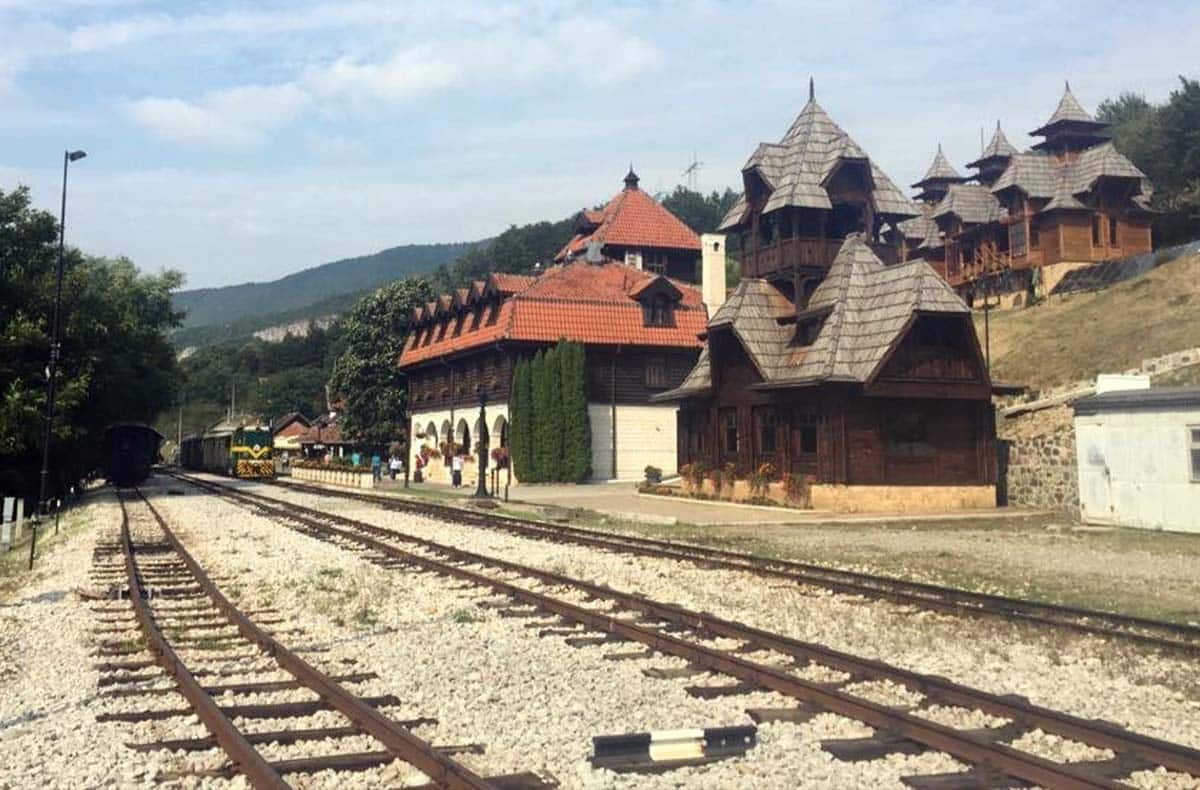
Not since the 19th century heyday of rail travel has the general public been so enamored of choo-choos. Americans want more trains, Brits want more trains, and people in saner countries that already have plenty of trains seem to be very happy with them. There are lots of obvious reasons to prefer traveling by train over a plane—even if flight tickets are often cheaper, thanks to airlines’ lobbying for government handouts. Train travel is both more enjoyable and better for the environment, while almost every aspect of flying is designed to make you miserable enough to pay for an upgrade to a slightly cooler circle of hell.
However, traveling by train has another massive advantage that rarely gets mentioned: the eateries just outside the station.
Anyone who travels by train frequently soon develops a mental map of the bars, bakeries, cafes, and restaurants within reasonable walking distance. They know where to grab a quick croissant before catching the 6:00 AM express and where to settle in for an afternoon of fry-nibbling and people-watching when they have a long connection. The neighborhood of the train station becomes comfortingly familiar: not quite like home exactly, but something in the same vein, in that you know how and where to meet your needs when they arise.
For those new to train travel—or at least a particular station—Google typically takes the place of that mental map, and the thrill of discovery replaces the ease of old habits. One of life’s small but significant pleasures is wandering outside a train station with half an hour to kill before departure and finding a kebab shop right as your travel partner starts to panic about getting back in time. I imagine this rush of accomplishment is much like what our ancient hunter-gatherer ancestors felt when encountering a bush of edible berries just as the hunger hallucinations began.
Train station-adjacent eateries offer opportunities to feel human, in other words. Just finding them requires that you exercise agency (as opposed to following the signs to the airport food court), and finding a good one yields a sense of spiritual satisfaction (in addition to satiating one’s hunger). The eateries outside a train station are like a bridge between two worlds: half the patrons are neighborhood folk going about their daily lives, the other half a gaggle of travelers bound for distant lands, all of them seeking the same life-sustaining carbs and caffeine.
Restaurants and travel have closely entwined histories, as illustrated in the gorgeous 2021 French film, Délicieux. A talented and irrepressibly creative chef is expelled from his chateau kitchen after angering his aristocratic patron by serving a dish made with plebeian ingredients like potato and truffle. Banished to a humble crossroads inn, the chef starts serving soup and simple meals to travelers of all backgrounds. People fall in love with the concept—it’s easy to forget now, but in most of the world, eating outside one’s home was rare until relatively recently—and soon, the chef is attracting diners from near and far to his bucolic little hideaway. The film takes its fair share of artistic liberties, yet it’s a fascinating (and visually soothing) look at the evolution of modern restaurants.
Your correspondent recently had an afternoon to ponder this evolution while waiting in Toulouse for a train to Paris. A narrow street called Rue de Bayard, a mere two-minute walk from the train station, offered at least a dozen pleasant places to pass the time and fill one’s belly for a reasonable price. Boulangeries and burger joints abounded. At least three kebab shops were clustered in one stretch of the street (including a fantastic Palestinian joint called Jérusalem.) Anything a hungry traveler could desire—from oysters to vegetarian bowls to giant steaks—was close at hand for a reasonable price. If like myself, you grew up associating travel food with airport Burger Kings and truckstop Snickers bars; you can imagine that this was a borderline religious experience.
But the food wasn’t the only appeal of these places. Seated at a tiny table outside the hotel-restaurant Le Bristol, watching crowds of people streaming in and out of the train station, I was reminded that the actual act of travel—of moving from Point A to Point B—can be fun in and of itself. Being in transit doesn’t have to be a war against clocks and other people. You can actually savor it when you do it right. Just as the chef in Délicieux dared to imagine new and exciting ways to eat, we can dare to embrace older and more satisfying ways to travel.
Modern travelers might no longer be awestruck by set prices or the ability to choose one’s dishes, but they can still appreciate the practicality and romance of Délicieux’s train station-adjacent descendants. The only thing better than setting off on an adventure is doing so with a full stomach, and the only thing better than that is doing so without paying $12.75 for a small boxed salad.



